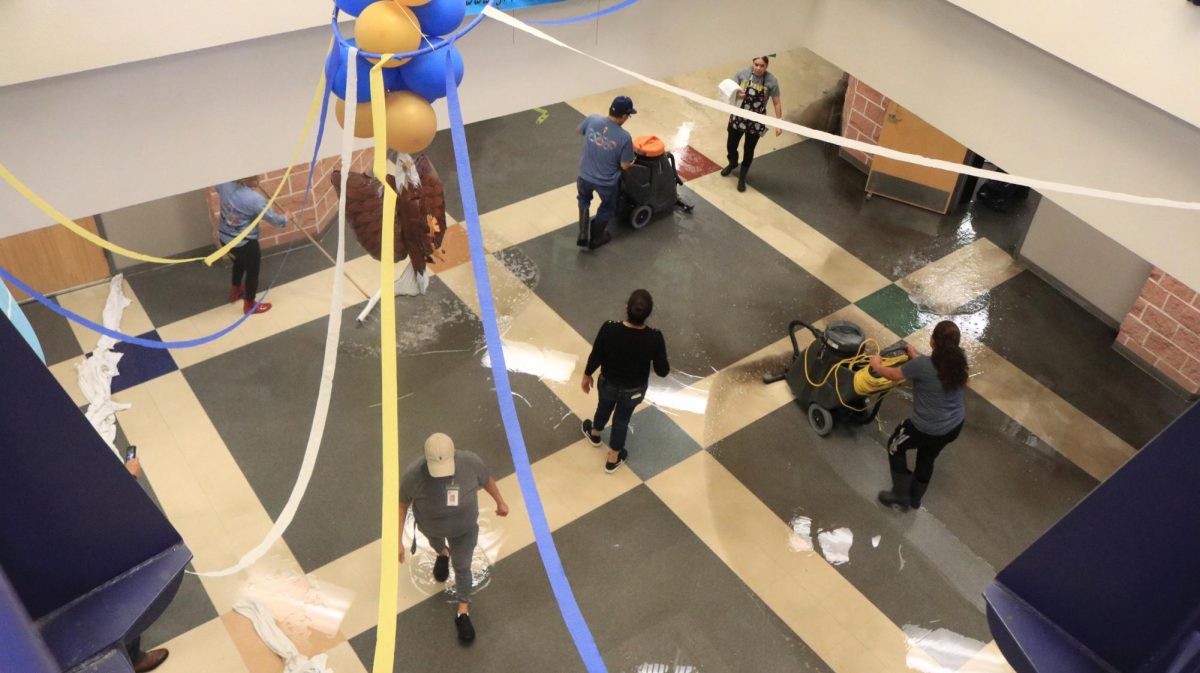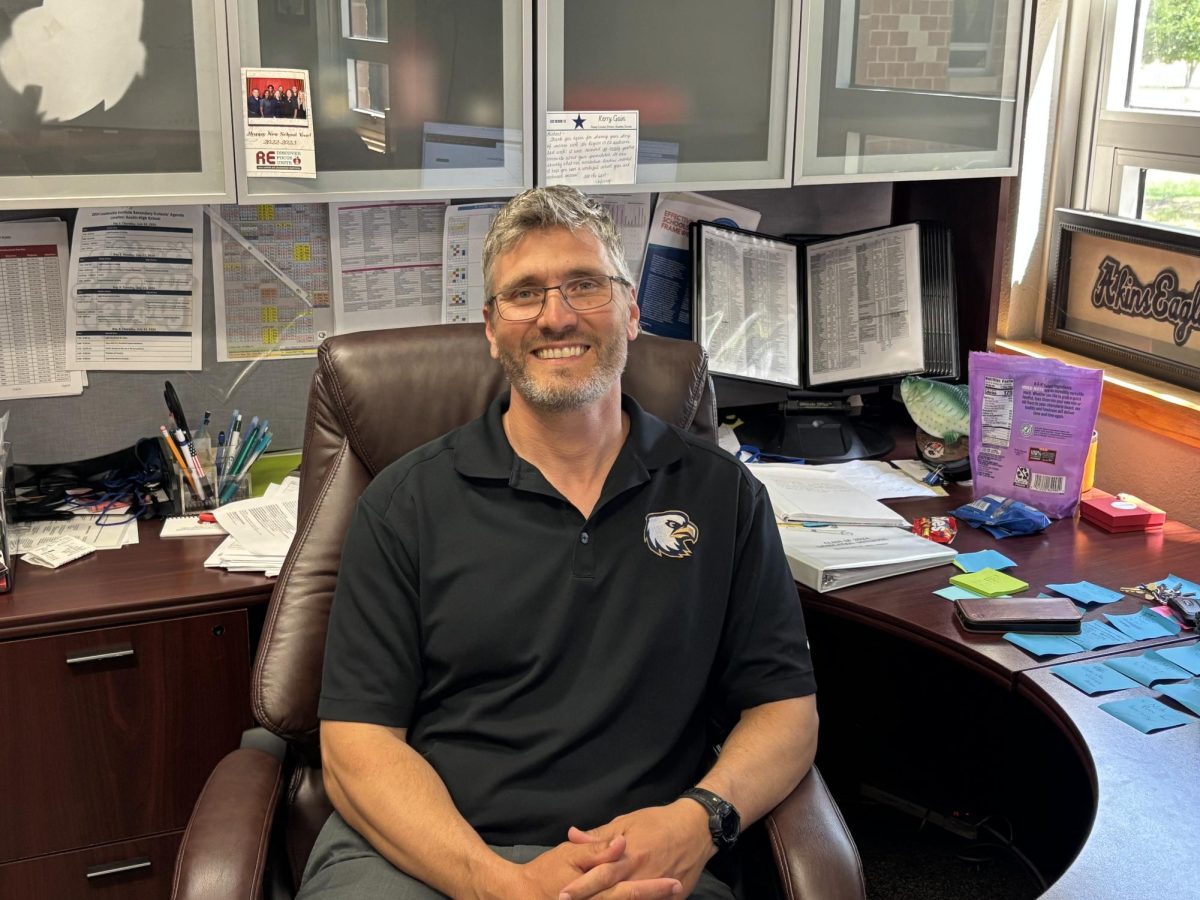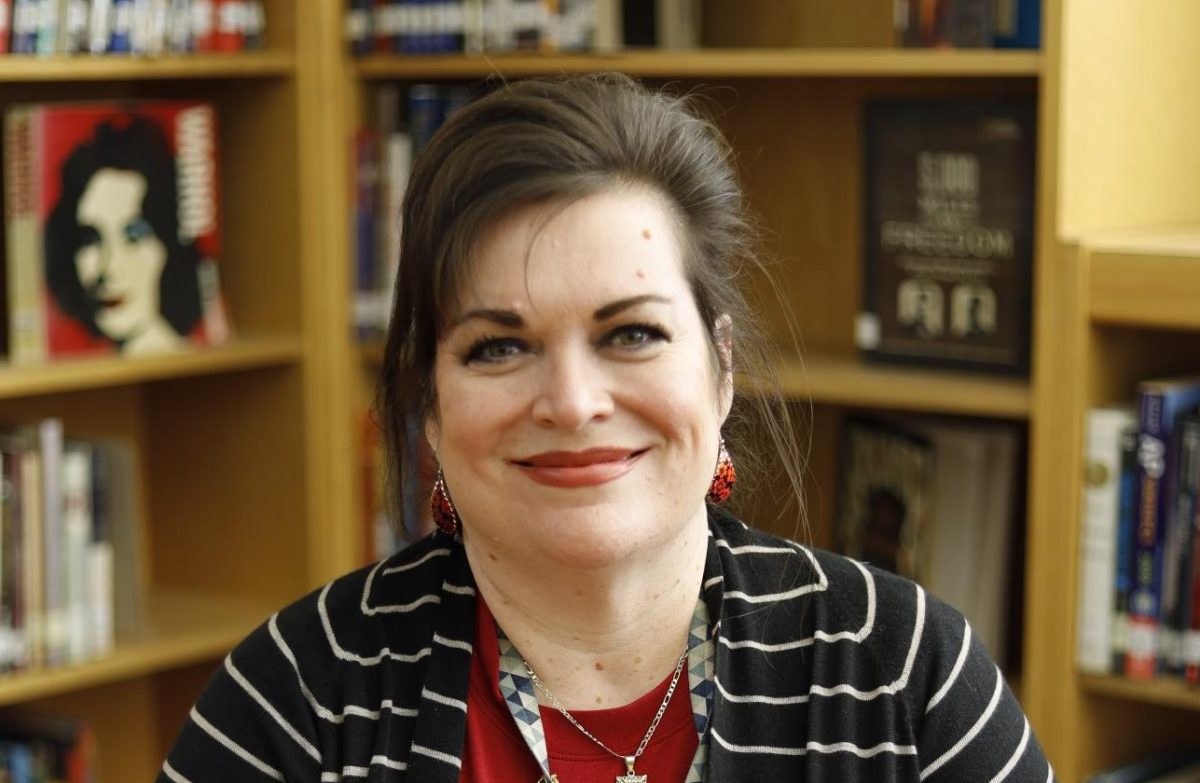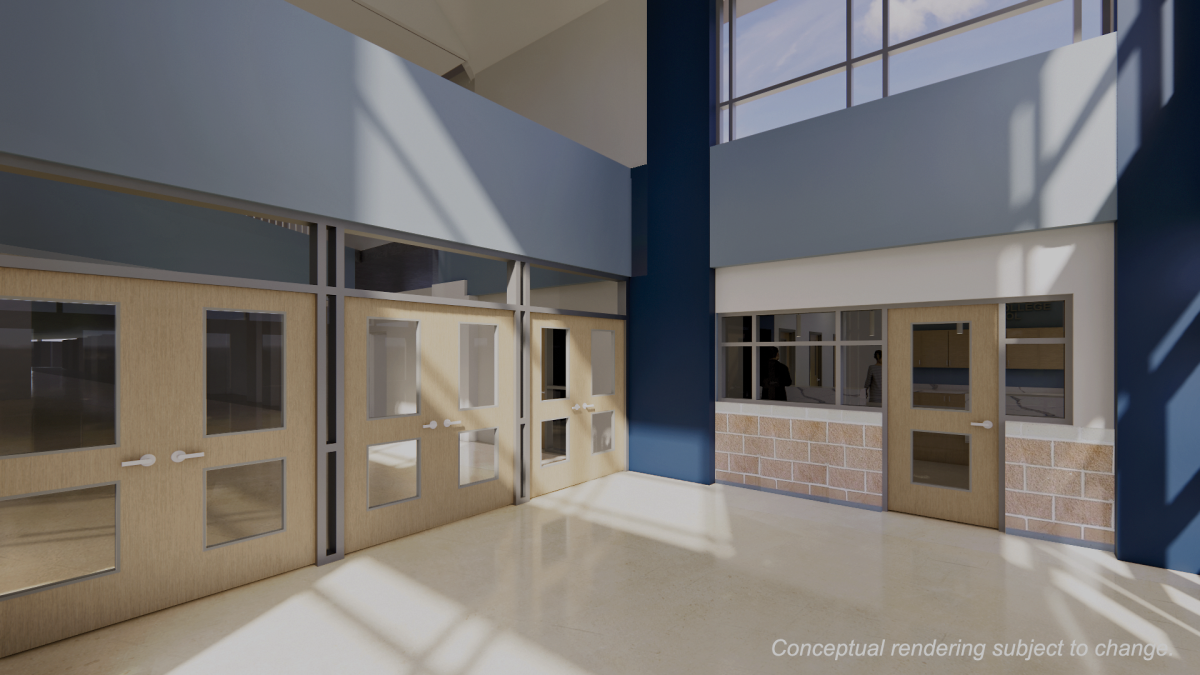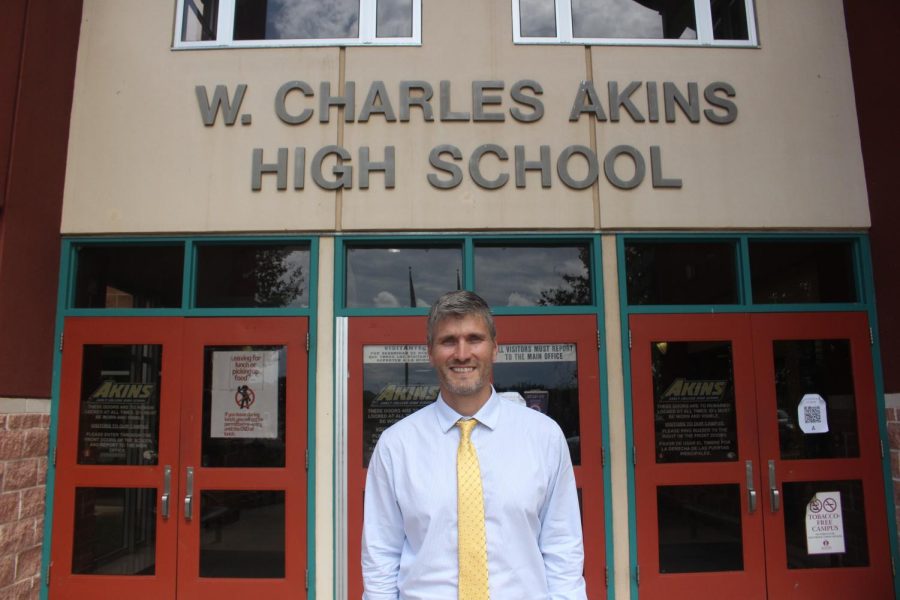When a sophomore in Stephanie Haynes classroom saw a stream of black sludge-like water pouring out of the ceiling in her science class on Oct. 17, she was shocked at what she was seeing.
First, there was a loud sound and then foul-smelling water started gushing down into the classroom, said the sophomore, who asked to remain anonymous. Students in the room were horrified at the strange sight and quickly got their phones out to record what they saw.
“It left half of the students traumatized because you never know when another pipe can just burst open at any time of the day,” she said.
The water leak was the first of two events in what’s known as the green hall of the main building, causing disruptions to the learning environment and raising concern among students and staff about the condition of the 24-year-old building. Three teachers were relocated to different classrooms for about three weeks before they were allowed to move back into the rooms that suffered water damage.
Principal Michael Herbin said the water leak originated from an AC water line for the coolant system that had a faulty weld that made the pipe weak. The water that poured out of the ceiling was black because it was in a closed system and old.
“It was black because it was just old,” he said. “I don’t know, how often those things get changed, but, I mean, it could have been 20-year-old water in there, right?”
The water poured into the hallway and damaged two other nearby classrooms, which also had to be relocated so district staff could replace the soaked drywall to prevent the development of mold. The repair work led to another disruption to the learning environment less than a week later when students and school staff were surprised by a gas leak when they arrived at school on Oct. 22.
School administrators notified school staff to leave the building until emergency workers could identify the source of the gas leak, shut down the leak, and allow time for the gas smell to dissipate. The gas leak caused classes to start about 40 minutes late, leading to some students not coming to school that day. Some teachers decided to relocate their classes outside the courtyard to avoid the strong smell of gas that remained in the building.
Herbin said the gas leak was caused by a worker who accidentally opened one of the gas lines in a science lab that was undergoing drywall repair work.
“It was literally a guy that was here, that doesn’t work here, doing the flood mitigation, who opened it,” Herbin said.
Students at Akins have expressed growing concerns about the condition of the campus following the incidents. Senior Robert Lockay shared his concerns about the condition of the portable classrooms.
“I remember in ASL my sophomore year, we had water dripping from the light,” Lockay said. There’s a whole infrastructure problem within Akins, where not enough funding has gone towards keeping the school up to date.”
Lockay said he is worried that the most recent incidents are part of a “domino effect.”
“As things continue to fall over, more things will fall over and get worse,” Lockay said.
Science teacher Matt Stricklen, one of the teachers affected by the water leak, said he understands that any building could experience a structural failure at some point.
“I don’t think there was anything that I saw that indicated something was wrong with the water line,” he said. “However, we do have some other infrastructure issues that, you know, this was a wake-up call to start looking at some of the older systems, and where we might need to take some preventive measures.”
In 2022, Austin ISD voters approved a bond issue proposition that includes funding for air conditioning replacement at Akins. Herbin said that the district will spend $5 million this summer to replace the school’s original AC units installed in the main building when the school opened in 2000. In addition, the school will see safety and security improvements including a “security vestibule,” which works like a holding area before visitors can enter the rest of the building.
There will also be tall fencing installed around the portables and improvements made to the CTE classrooms.
Despite these improvements, Lockay said he still has concerns with the level of funding the school receives from the state to keep the campus in optimal condition.
“We’re just generally doing basic maintenance,” he said. “They’re scraping by with the bare minimum.”


